That’s how gums reattach to teeth after deep cleaning
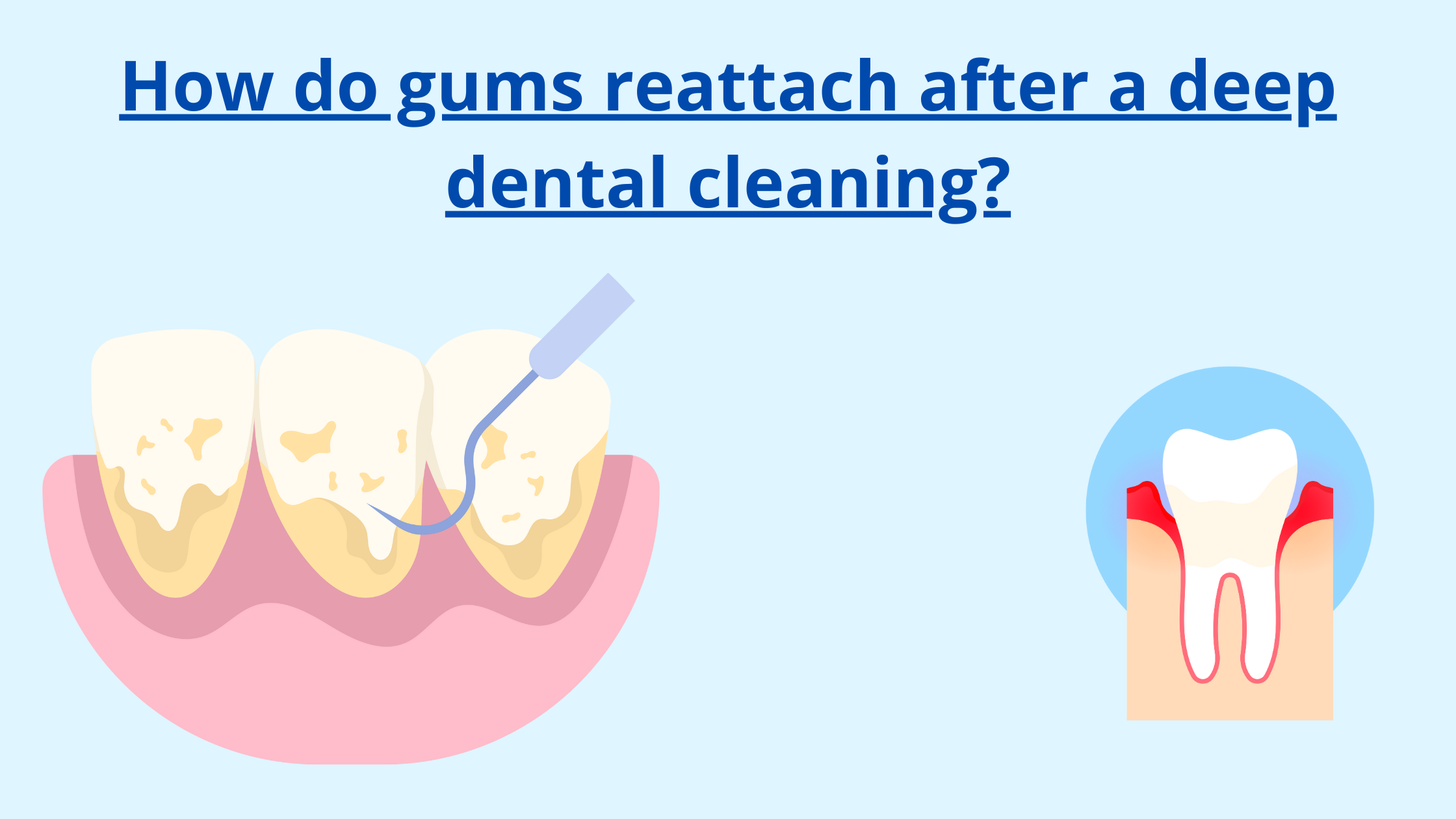
Key takeaway
- Gum disease slowly damages the tissues that support your teeth.
- Deep dental cleaning tackles the root cause: plaque and tartar buildup.
- After the procedure, your body will find the ideal conditions to initiate the repair process.
- Your gums will become firmer, healthier, and inflammation-free. New tissue will form, attaching the gums back to the roots. This reattachment process may take 1 to 3 months.
- Some of the lost bone might also regenerate. Bone regrowth is a slow process, often taking over a year.
In this article:
1. When is deep dental cleaning needed?
2. How does periodontal disease cause the gums to detach from the teeth?
3. How does deep cleaning help gums reattach to teeth?
4. How long does it take for the gums to reattach to the teeth?
5. Some gum recession is normal and expected after deep cleaning
6. Can deep dental cleaning rebuild lost bone?
7. What to expect in the first week of treatment
8. From first week to full recovery
When is deep dental cleaning needed?
Deep dental cleaning isn't something everyone needs; it's only necessary for people with advanced gum disease, known as periodontitis. It's a condition that irreversibly destroys the tissues that surround the tooth.Deep dental cleaning's goal is to remove the source of the problem: plaque and tartar.
Plaque is a soft whitish film that constantly sticks to teeth. It's a haven for bacteria, with just one drop of plaque containing over ten billion bacteria!
When you neglect your oral hygiene, plaque will take time to absorb the minerals from saliva and turn into a harder substance called tartar.
Tartar is stickier and more difficult to remove at home. If left there, it can extend further below the gum line. Due to its porous and rough surface, it promotes even more plaque and bacteria buildup.
So, plaque and tartar must be removed at all cost, and that's where deep dental cleaning comes in.
The procedure involves two steps: scaling and root planing.
Scaling clears away plaque and tartar from the tooth surfaces (both above and below the gum line), while root planing completes the scaling job by cleaning the roots and smoothing them out.
The goal is to leave the teeth surfaces clean, smooth, and tartar-free, encouraging damaged tissues to repair and reattach.
How do plaque and tartar cause gum disease?
Plaque and tartar contain some highly aggressive bacteria. They can infiltrate tissues and trigger inflammation.
While inflammation is there to defend us by pushing bacteria away, if it persists, it can have an adverse effect, damaging tissues and causing them to recede from the teeth.
How does periodontal disease cause the gums to detach from the teeth?
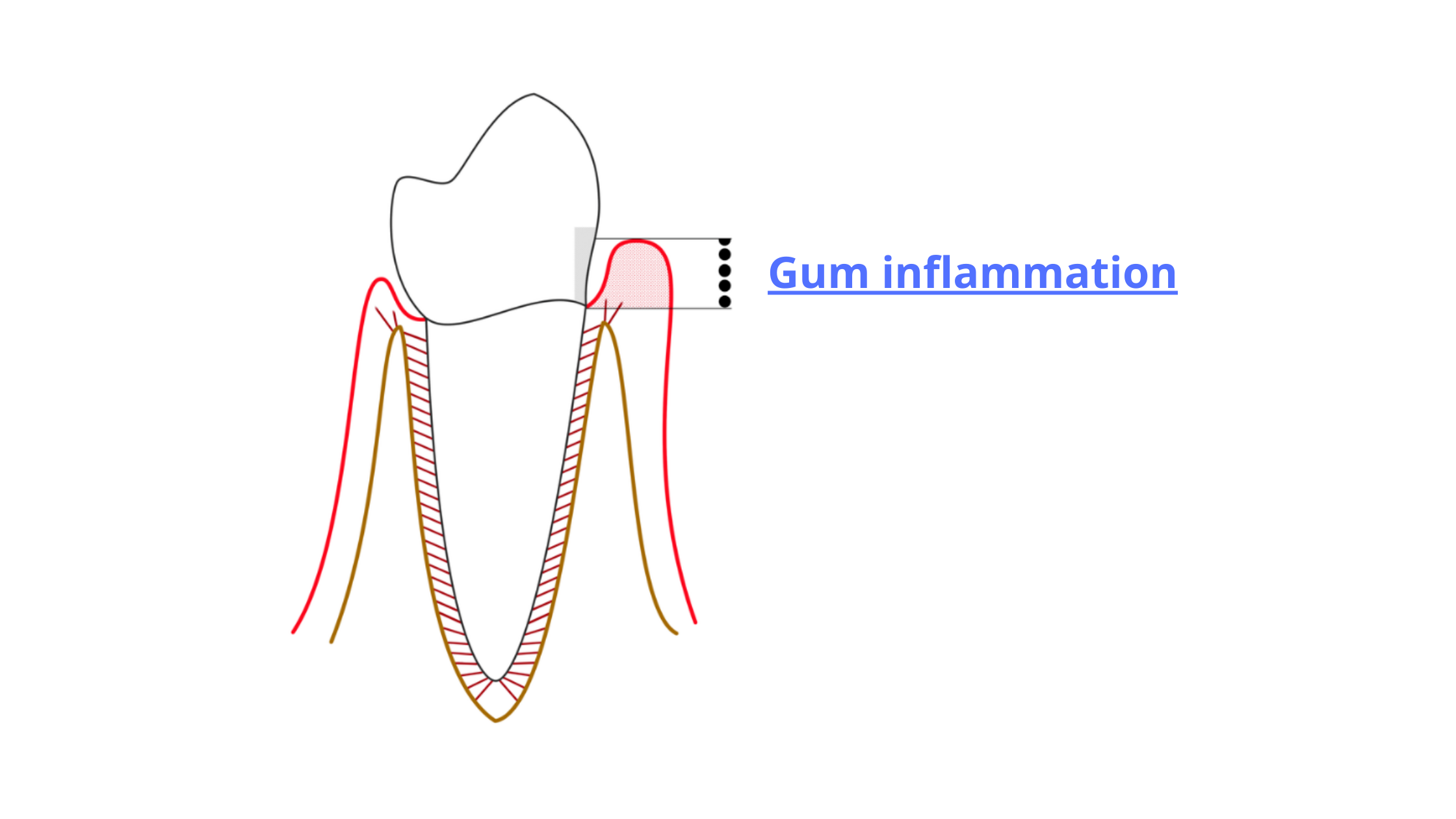
Initially, periodontal disease affects only the gums, known as gingivitis. During this stage, the gums may appear swollen, red, and bleed easily. If left untreated, gingivitis can progress to periodontitis, a more aggressive form of the disease.
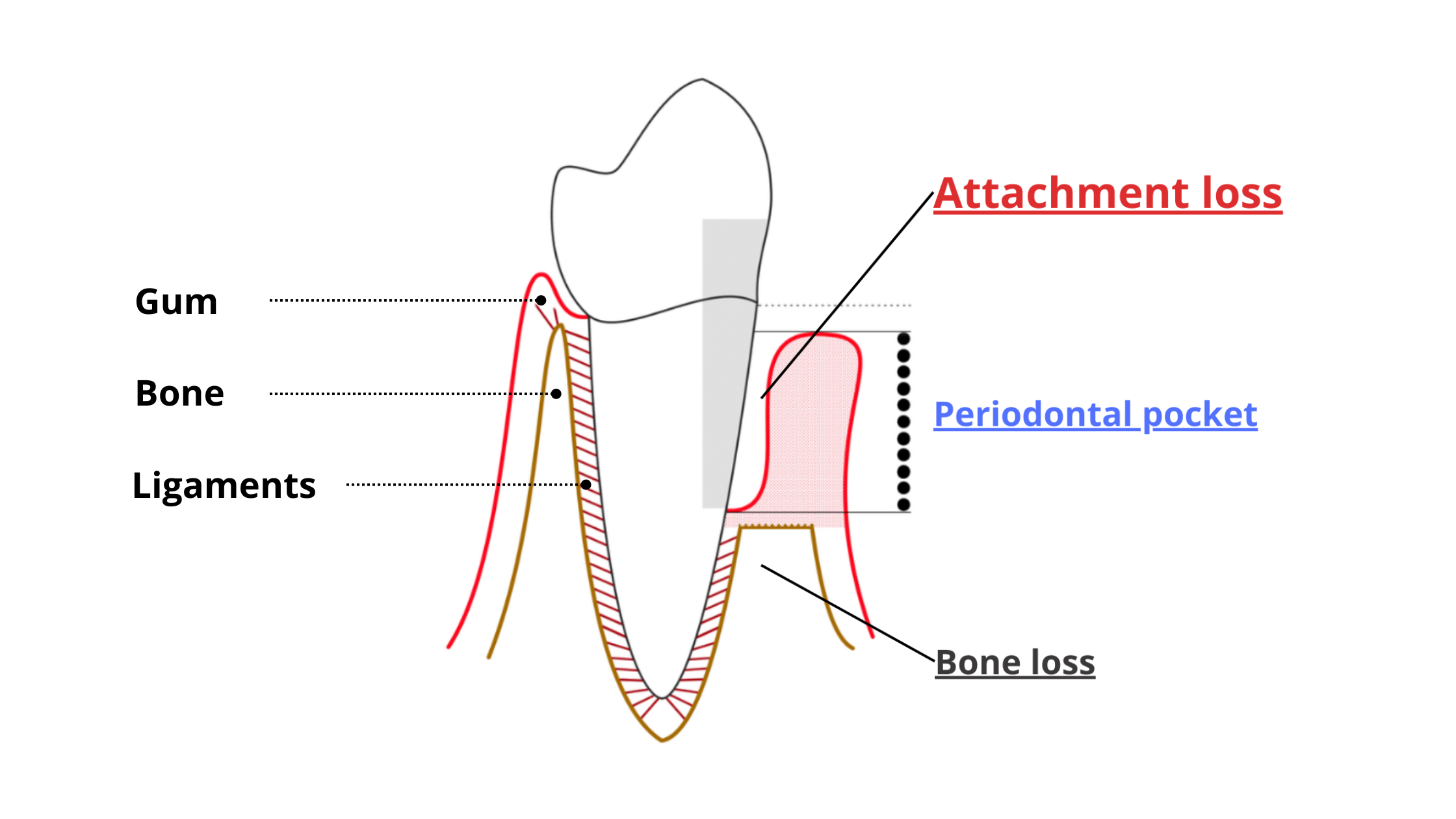
Periodontitis targets the tissues supporting the teeth, including ligaments, cementum, and bone.
The ligaments are like tiny threads that keep the gums firmly attached and anchor the roots securely within the bone. When these ligaments break down, the gums become loose and appear detached, and the teeth may start to move and shift.
As the disease advances, the spaces between the gums and roots widen, forming open gaps known as periodontal pockets. Not only are these pockets impossible to clean with a toothbrush, but they also provide a breeding ground for bacteria, keeping the infection alive.
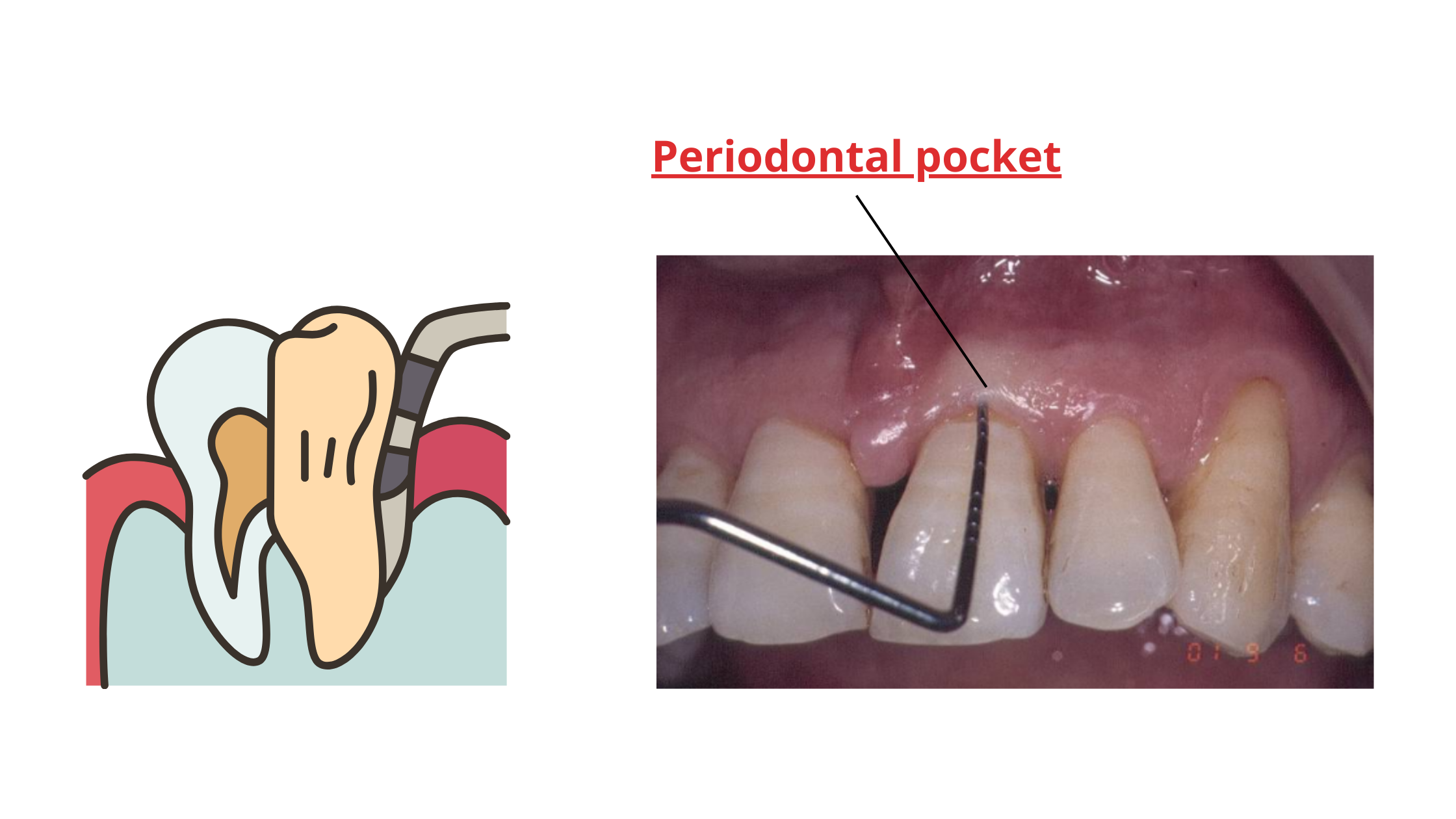
That's why eliminating these pockets must be one of the top treatment priorities.
How does deep cleaning help gums reattach to teeth?
Deep dental cleaning helps the gums reattach mainly by creating the perfect environment for the body to heal itself.Once the plaque and tartar are removed and the periodontal pockets cleaned, inflammation will start to subside, and the healing process begin. Of course, this assumes that your oral hygiene is on point.
Connective tissues, fibers, and ligaments that make up the gums will start to rebuild and regenerate, resulting in stronger, healthier gums.
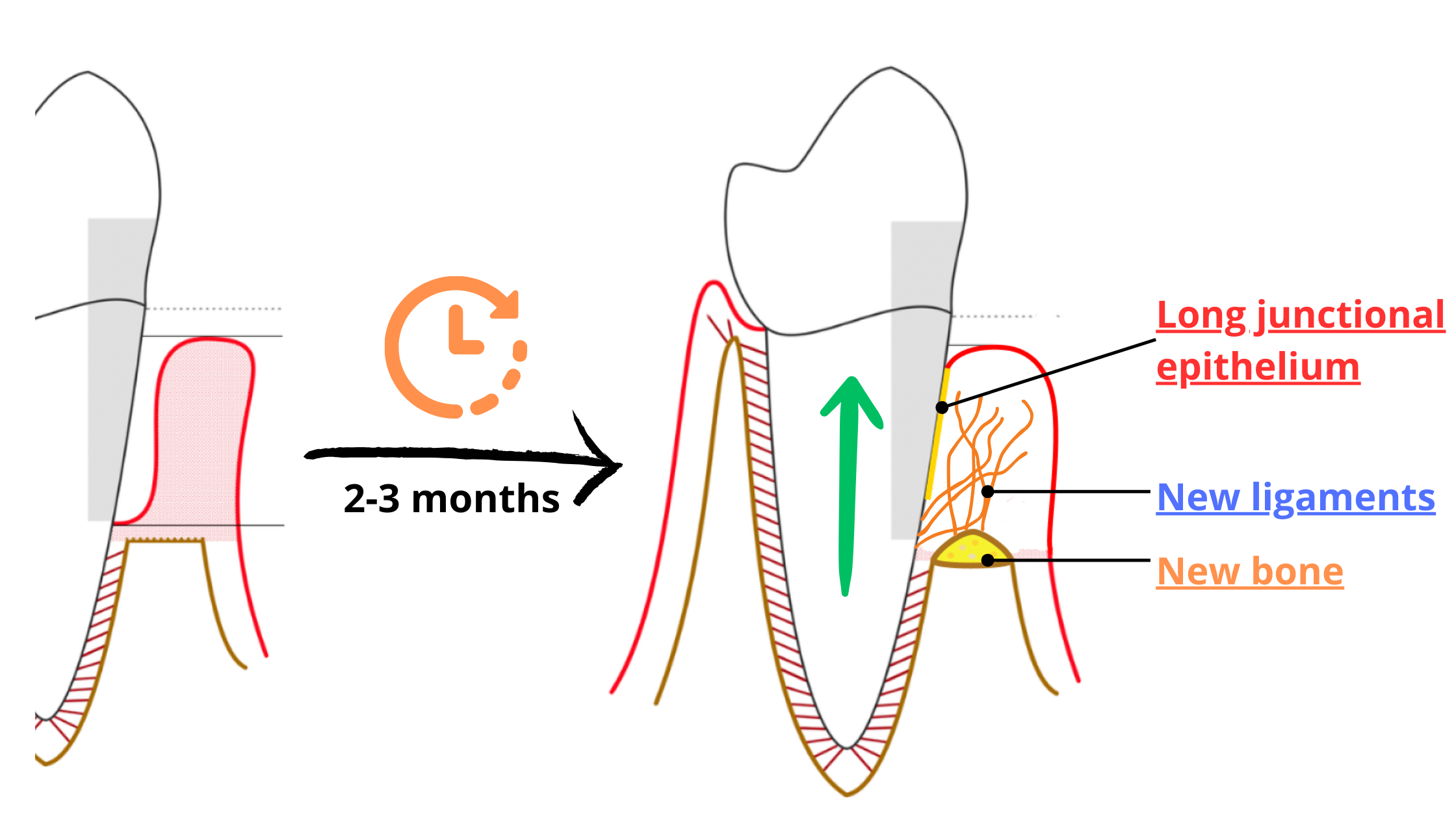
Additionally, a new tissue called long junctional epithelium forms along the roots below the gum line. This tissue acts like glue, reconnecting the gums to the roots and reducing the depth of periodontal pockets.
How long does it take for the gums to reattach to the teeth?
After the procedure, you'll start noticing significant improvements in your gum health within the first week. Your gums will feel less sensitive and will look healthier, firmer, and inflammation-free.However, the gum reattachment process can take anywhere from 1 to 3 months after treatment. That's because the healing process is complex and goes through several stages before the tissues fully mature and gain strength.
Once the healing is complete, the newly formed long junctional epithelium and ligaments will reestablish the connection between the gums and teeth. Most importantly, this will remove the periodontal pockets, ensuring a healthy environment in the long run.
Some gum recession is normal and expected after deep cleaning
It's normal for your gums to slightly recede after a deep cleaning procedure, and it's actually a good sign that they're healing.As inflammation decreases and swelling goes down, the gums may shrink, exposing more of the roots. So, your teeth may look longer, and you might notice black gaps between them.
However, this doesn't mean a new recession is happening. It's just revealing areas that were hidden by inflammation and swelling before.
The extent of gum recession after treatment varies, but generally, the deeper the periodontal pockets, the more likely the gums will shrink during healing.
Can deep dental cleaning rebuild lost bone?
One of the most challenging parts of periodontitis is the gradual loss of bone around the teeth, which unfortunately can't be fully reversed.However, studies have shown that after root planing, there can be some increase in bone under optimal conditions. This means that with proper care, not only can gums and ligaments heal, but bone cells can also become active, contributing to repair and regeneration. There are cases where significant bone gain is achieved after treatment.
But, unlike gum tissue, bone formation and maturation take longer, often several months or even years.
Don't forget, maintaining excellent oral hygiene throughout the journey is crucial for the best outcomes and long-term results.
What to expect in the first week of treatment
Right after the procedure, your gums may feel tender and sensitive, which is normal and should improve over the next few days.You might also notice increased sensitivity in your teeth to cold, hot, and sweet foods. This is because the tartar that used to cover the roots is gone, leaving them exposed. Since roots aren't made to be exposed to the mouth's environment, they can be more sensitive to irritation.
By the end of the first week, things should improve significantly. Inflammation and sensitivity will subside, and your gums will begin to look healthier.
Here are some tips for the initial week after the procedure:
- Continue to brush your teeth as usual, gently using the correct technique, even if your gums are bleeding.
- Clean between your teeth once a day using dental floss, an interdental brush, or a water flosser.
- If your teeth feel sensitive, you can apply desensitizing toothpaste directly onto the tooth surface using your finger. Leave it on for a few minutes before rinsing. You can repeat this process several times a day.
- Mix a tablespoon of salt in a cup of water and rinse your mouth several times a day. Saltwater mouth rinse will help soothe your gums and reduce inflammation.
From first week to full recovery
Full healing and maturation of the tissues around the tooth can take several months to over a year. So, the key is to stay patient and play the long game by keeping excellent and regular oral hygiene.Start by improving your brushing technique, and make sure to clean between your teeth regularly.
You can also incorporate other tools into your routine. For instance, if you haven't already, start cleaning your tongue daily. The tongue houses bacteria that cause bad breath. By cleaning it regularly, you'll reduce the bacterial load in your mouth and improve your breath.
I can't stress this enough: good oral hygiene is the basis for overcoming gum disease. While deep cleaning undoubtedly helps, it's your consistent efforts at home that will ultimately decide the success of the treatment.